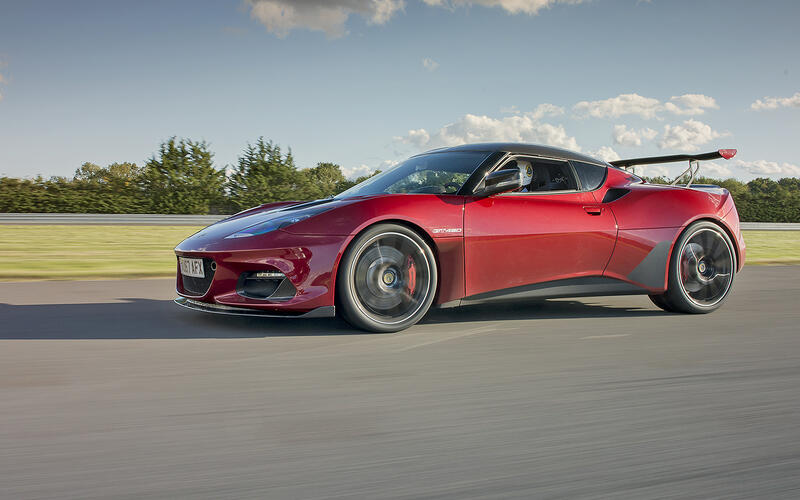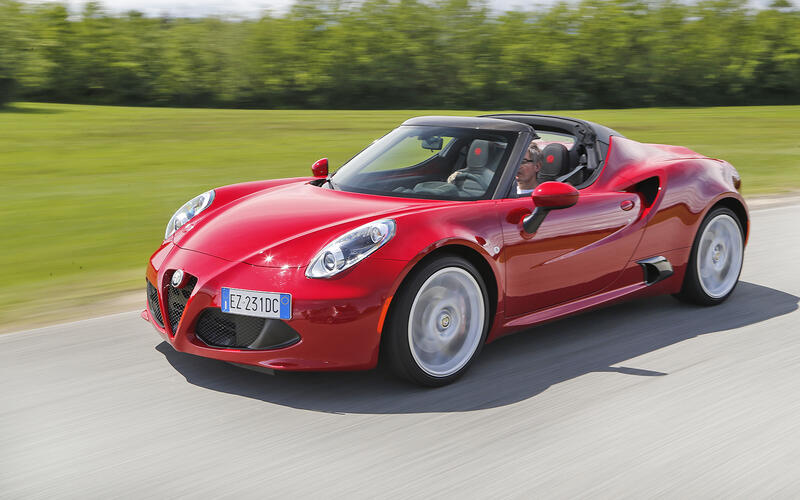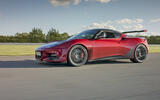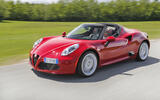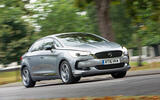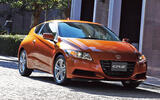 Slide of
Slide of
From the moment the proud designer slides off the cloth cover, the car looks to be a nailed-on smash hit.
Very often it is. But sometimes, a car that looks like a sure-fire winner fails to make the cut.
Sometimes the car doesn’t drive in the ways its looks say it will. Sometimes the price is wrong. Sometimes there isn’t enough promotion behind it. Very often, it’s a mix of all these things and more. Read on, then, to discover our selection of cars that should have been stars, and also five unlikely machines that broke records:
 Slide of
Slide of
Alfa Romeo 4C (2013-2020)
Sometimes the ingredients for perfection are all there. A carbonfibre tub designed especially for this car. A mid-mounted, revvy, sweet, slightly oversized turbocharged motor. Great styling, an Alfa Romeo badge and a mission to deliver pure driving enjoyment – and, indeed, little else.
So where did it all go wrong? Geometry, mainly. Alfa’s suspension was at times alarmingly twitchy, its directional stability similar to a chicken attempting flight. It was tiresomely noisy, too. Alfas that don’t handle usually don’t sell, and so it is with the flawed 4C. Right ingredients, wrong recipe.
 Slide of
Slide of
DS Automobiles DS 5 (2011-2018)
DS is a relatively new premium sub-brand (and later standalone brand) launched by France's Citroën in 2009. The DS 5 was a beautiful, troubled car that sold slowly enough to constitute a limited edition. When it emerged as a Citroën, the DS 5 looked like it really could tempt buyers out of their BMWs.
A shooting brake, coupé, and hatchback cross, it was fast, had a luscious interior and an extremely stiff sports suspension. And this last thing may have been the car’s biggest problem.
 Slide of
Slide of
Jaguar XJR575 (2017-18)
This is a car that seems to have lived for 10 minutes, hidden from view. As its name implies, it has a pleasingly excessive horsepower count, can reach its 186mph top speed in 44 seconds and 62mph in precisely a tenth of that time.
It has a chassis to handle the power, and with XJ aplomb, too. It’s also the last petrol-powered XJ variant ever developed. WLTP changes and default diesel XJ demand did for it in most markets, but it deserved better.
 Slide of
Slide of
Honda CR-Z (2010-15)
It referenced one of Honda’s greatest sporting hits, its chassis was co-developed with a Japanese drift ace, and it was packed with on-trend technology. But the CR-Z’s life petered out before planned, its mix of features failing to press that ‘I want one’ button.
Unlike Honda’s inspirational CR-X coupé, the CR-Z was a hybrid, both in function and character. It wasn’t fast and fun enough for red mist redliners, nor economical or practical enough for eco-commuters. So it died early…
 Slide of
Slide of
Toyota Urban Cruiser (2009-12)
The name was quite interesting. The shape was too, when this Toyota was new. Wouldn't you rather have this than just another supermini? You might, until you discovered that the Urban Cruiser was as dull as a queue.
The interior was all shades and grades of black, with no features to make you think you were driving something interesting, urban or cool, and it drove with the verve of an escalator. The market soon found out, and failed to buy it.
 Slide of
Slide of
Renault Wind (2010-12)
It looked like a concept car, was developed by Renault Sport, had a roof that folded away in 12 seconds and was affordable. It was also fun and looked like no other small sports car on the road. True, the name was unfortunate, the Twingo mechanicals didn’t quite deliver a magical chassis and the tiny rear window was a threat to bumpers.
 Slide of
Slide of
Opel Ampera (2012-15)
This was a car that should have triggered a plug-in revolution. One of the first electrified range-extenders, its pioneering technology produced a truly practical car, and one that wouldn't leave you stranded for want of a socket. It was interesting to look at and sit in, it drove pretty well - and very quietly - and its emissions were zero to low.
Job done? No, sadly. The price was too high. It only seated four. And it was an Opel, Astra-sized and double the money. For most, that didn't compute.
 Slide of
Slide of
Lotus Evora (2009-2021)
The costliest model Lotus had ever developed, the Evora aimed to combine Elise dynamism with refinement, 2+2 practicality and the electronic tech to make this a practical, almost everyday Lotus. So everyday, Lotus reckoned, that it would sell 2000 a year.
Sales barely reached half that in its best year, and while the car improved and power climbed, so did the price, turning the Evora into a niche seller. It’s far from a bad car, and the chassis is sensational, but annoyingly for Lotus, Porsche – mostly – did it better.
 Slide of
Slide of
Peugeot RCZ (2010-15)
Yes, you could see the Audi TT influence and, yes, it suffered some of the same dulled dynamic feedback as the TT, but this was a pretty, intriguing, well-finished and desirable sports coupé. Its appeal was powerful enough to win it loads of page impressions, column inches and airtime. And then it all went dead.
Peugeot’s promotion was minimal, until the RCZ-R version landed. Peugeot sold almost 68,000 RCZs, but important markets like the UK never bought many after the initial surge.
 Slide of
Slide of
Mini Coupe (2012-15)
Germany had already produced one car with roof like a military helmet: the original Audi TT was an outstanding success. Now here was another. Only this time, it just looked odd. Very odd.
Odd enough that it lived for less than three years, killed by the fact that it was even less practical than a Mini hatchback and looked like the kind of creature found lurking around deep ocean vent holes. Dying with it was the barely-any-prettier Roadster.
 Slide of
Slide of
Saab 9-5 (2010-11)
This was a missed opportunity not only for a car, but the brand that built it. By the time the 9-5 entered series production after the 2008 crash, government-controlled GM had reluctantly sold the marque to Spyker Cars.
The build of 11,280 examples wasn’t enough to avoid Saab’s bankruptcy, and the premature death of a stylish, spacious and safe car that needed a bit more polish. And a solvent company behind it. The 9-5 still looks good today, making Saab’s death all the sadder.
 Slide of
Slide of
Cadillac CTS-V (2009-2019)
Cadillac’s attempts to claw itself a presence in Europe have produced frothy ambitions, repeated failures and even a Europe-only Cadillac in the shape of the BLS, based on the Saab 9-3.
The CTS-V was a ferociously muscular super-saloon, coupé and estate aimed at the BMW M3 and M5. And it beat some Nürburgring records too. Despite its mighty credentials and distinctive style, the CTS-V scored just small sales outside America.
 Slide of
Slide of
Volkswagen Beetle (1997-2019)
Reviving the most popular car in the world, ever, should have been easy. For many years, it was, even if the 1997 production Beetle had rather less character than its looks suggested. Underneath, it was a Mk4 Golf – a dynamically mediocre example of the breed.
A Cabriolet followed, and in 2011 an all-new version, cast in a visually sportier mould. But character was still absent; Volkswagen somehow failed to build the aura of desire successfully harnessed around the re-born Mini and Fiat 500. Production stopped in July 2019.
 Slide of
Slide of
Mini Paceman (2013-16)
Another faltering attempt to expand the Mini portfolio. Based on the Countryman, the Paceman was a four-seat Mini coupé and being bigger than its two-seat Coupe sibling, was at least more useful.
It also introduced a rising beltline to the Mini design catalogue, and quite successfully. Less-than-polished Countryman innards yielded a car that looked better than it drove, and offered little that the standard Mini hatch didn’t.
 Slide of
Slide of
Jaguar F-Type (2013-2024)
Jaguar, more than most, knows how to make cars that grip, handle and ride. For its follow-up to the legendary E-Type, you’d expect it to over-deliver on the first two, and satisfy on the third. But, whisper it, the F-Type has a challenging chassis, at least in lesser V6 form.
Get it on a track and you’ll feel it get out of sorts. Take it down the road and you discovered that its composure was less complete than offered by either Porsche’s 718 or 911. A facelift in 2019 was well received, but couldn’t cover up the fact that the model was getting old.
So those are the cars that underperformed. But what about those that were surprisingly successful?
 Slide of
Slide of
BMW Mini (2001+)
This was a dangerous challenge – replace the best-selling British car of all time, a car that was part of the national culture and a car whose makers had repeatedly failed to replace.
German money, motivation and pragmatism produced what many considered an over-sized revival, but it was a high-quality one. The new Mini was exactly what the market wanted - the Mini's difficult second album has been a success.
 Slide of
Slide of
Nissan Qashqai (2006+)
Is it an SUV? Is it a hatchback? Is it some oddball, fiscally mutated machine from Japan? The Qashqai was, and is, the first two of these things, and back in 2006 there were plenty who didn’t quite know what to make of this high-riding hatch with a four-wheel drive option.
They do now, this crossover selling fast enough to rescue Nissan’s fast-shrinking European presence and establish a whole new genre of competitors.
 Slide of
Slide of
Nissan Juke (2011+)
Is it an SUV? Is it a hatchback? Is it some oddball, a mutated machine from Japan? The Juke was, and is, the first two things but, coming after the Qashqai, buyers had less trouble understanding what this little SUV was all about.
Its styling was divisive, but there were enough who liked it to frequently propel into the top 10 selling cars in several markets. Curiously, Nissan was slow to replace the Juke, perhaps because it sold well even late in life. An all-new one went on sale in late 2019.
 Slide of
Slide of
Range Rover Evoque (2011+)
The 2008 LRX concept was a hit, but not one as big as the production car itself. Land Rover famously deviated only by millimetres when it turned the three-door LRX into the three-door Evoque, although it was the more practical five-door that ignited the firm’s spectacular expansion.
After nearly 800,000 sales, the original was replaced in 2018 by a new model almost dimensionally identical, and that’s been a strong seller too.
 Slide of
Slide of
Toyota Prius (2000+)
The first Prius was a slightly ungainly four-door saloon with an odd little air vent beneath the nearside rear pillar, and was initially offered only in Japan. Global sales began in 2000, and by 2002 US celebrities were driving them as a political statement.
Sales accelerated, still harder with the second generation’s arrival in 2003. Millions have been sold, and hybrids have become ordinary. That’s real confirmation of success.
If you enjoyed this story, please click the Follow button above to see more like it from Autocar
Access control:
Open
Include in Apple News:


